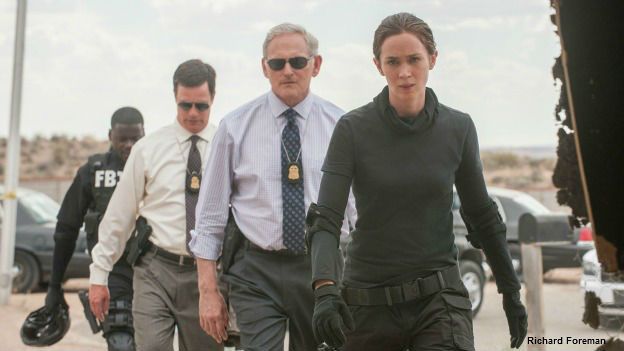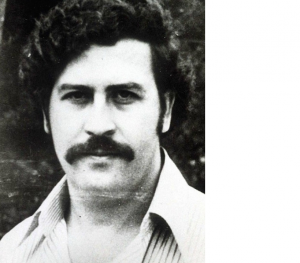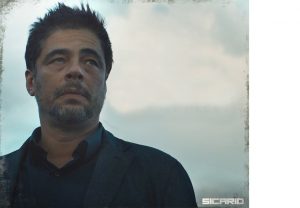
Podemos calificar a Sicario como un thriller de frontera, al desarrollarse en Ciudad Juárez y ya que durante toda la película se transmite una sensación de incertidumbre sobre los motivos de las acciones o el lugar que cada personaje tiene dentro de la narrativa, especialmente entre el personaje de Alejandro, que sólo hacia el final conocemos que se trata de un sicario contratado por la CIA con libertad para matar siempre y cuando beneficie a los intereses de la agencia, y Kate, la agente del FBI que se ve obligada a trabajar con la CIA y la DEA en la ciudad.
Es relevante señalar en Sicario que trabaja sobre una problemática de la moral, es decir, sobre la distinción social e históricamente construida que establece los lineamientos acerca de lo que está bien y mal. Podemos afirmar que hasta cierto punto cruzar la frontera significa para el personaje de Kate, el inicio de una serie de rupturas morales. Por ejemplo, luego de las muertes que se dan en autopista al inicio de la película en manos de los agentes, que es una especie de graduación de fuego para Kate, mencionará: “somos agentes, no soldados”. Como queriendo establecer así un cierto código moral de acción, un procedimiento que limite la violencia indiscriminada y que separe a los oficiales de la ley, de los criminales. El desarrollo de la película intenta demostrar lo contrario de forma reiterada, los carteles del narcotráfico y las agencias gubernamentales funcionan en Juarez de una forma distinta a la que piensa Kate, cercana a la de una zona de guerra donde la moral ha sido eliminada.
Es aquí donde el personaje de Alejandro contrasta de forma notable con ella, su posición está más allá de lo que pueda ser considerado bueno o malo y su única valoración es la eficacia que sus acciones puedan tener para lograr un objetivo personal, que en su caso es la venganza; desde este punto es totalmente contrario a Kate, para Alejandro no existen códigos a seguir mientras las acciones funcionen. Podríamos pensar incluso que se piensa a sí mismo como un sujeto amoral, ya que Juárez constituiría para él, un lugar de excepcionalidad, donde las leyes de conducta que rigen el bien y el mal están en suspenso, de ahí que matar a inocentes o engañar sean acciones que no tengan para él ningún significado por sí mismas.
La escena final de la película intenta resumir estos dos puntos de vista distintos en torno a la moral. Con Alejandro obligando a Kate a firmar un documento amenazándola de muerte con una pistola en la cabeza para que se justifique la legalidad del asesinato del líder del cartel, mientras que ella, luego, es incapaz de dispararle cuando lo mira desde el balcón de su habitación, marcharse por el parqueadero del hotel. Dilemas morales en la frontera.



